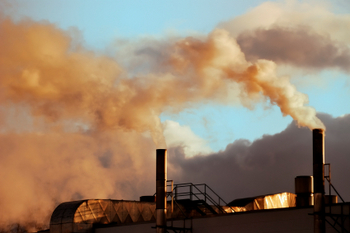
Three-judge panel affirms EPA’s decisions in regulating greenhouse gases.
Late last month, a federal appeals court denied or dismissed all challenges to four greenhouse gas regulations issued by the Environmental Protection Agency (EPA). In its opinion, a panel of three judges concluded that the EPA acted within its authority under the Clean Air Act (CAA) in issuing the four regulations.
The appeal, heard by a panel of the U.S. Court of Appeals for the District of Columbia Circuit, combined a number of petitions for review of the EPA rules brought by industry groups and states. The petitioners claimed that the EPA’s rules were “arbitrary and capricious” and based on an incorrect interpretation of the CAA.
At issue was, first, an “endangerment finding,” according to which the EPA concluded that greenhouse gases contribute to climate change and therefore pose a danger to human health and welfare, making these gases subject to regulation under the CAA. The second rule at issue was the so-called tailpipe rule, which established new, national emissions standards for light-duty motor vehicles. The third and fourth rules — the “timing” and “tailoring” rule — together stated that only the largest stationary emitters of greenhouse gases — such as industrial factories — would be required to seek state-issued construction and operating permits, and only once the tailpipe rule had gone into effect.
Petitioners attacked the endangerment finding partly on the grounds that the EPA had not been sufficiently rigorous in its review of the scientific evidence for the role of greenhouse gases in climate change, and that the evidence itself was too uncertain. The judicial panel disagreed, stating that the EPA finding was supported by “substantial evidence” and was appropriate given the precautionary nature of the CAA. The panel’s opinion stated that “[r]equiring that EPA find ‘certain’ endangerment of public health or welfare before regulating greenhouse gases would effectively prevent EPA from doing the job Congress gave it in [the CAA].”
The three-judge panel also rejected the claim that the EPA should not have promulgated the endangerment finding and tailpipe rule due to the potential costs they would impose on states and industries. Citing Massachusetts v. EPA, the Court noted that the EPA was required only to use its “scientific judgment” to determine whether greenhouse gases endanger public health. Further, once it issued an endangerment finding, the EPA was legally required to issue the tailpipe rule regardless of its potential costs.
The judges dismissed the challenges to the timing and tailoring rules owing to a lack of standing. In the panel’s view, no petitioner had legal standing to challenge these rules because none could show harm stemming from rules that gave regulated firms greater flexibility.
Industry groups criticized the decision, while EPA Administrator Lisa Jackson called it a “strong validation” of the agency’s rulemaking.



